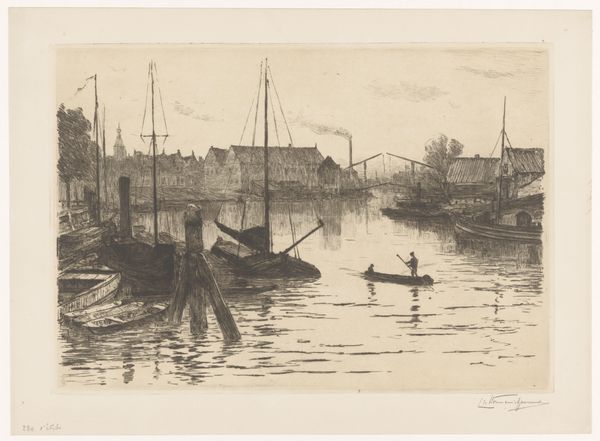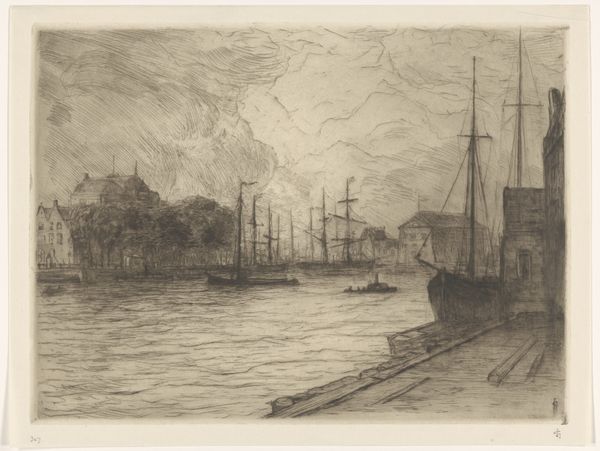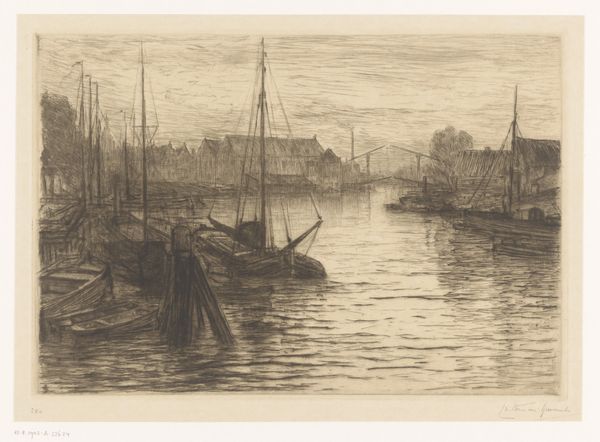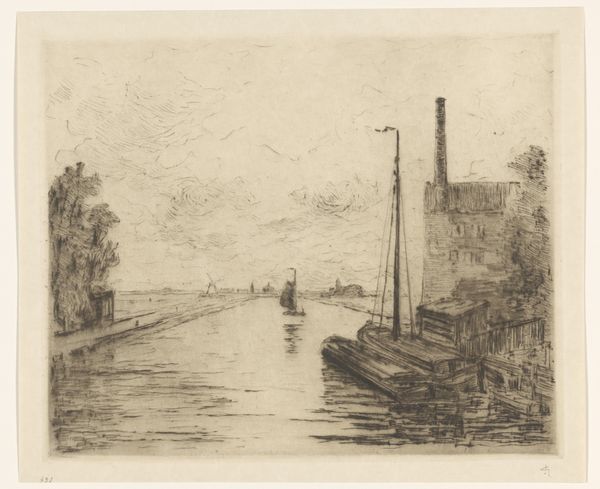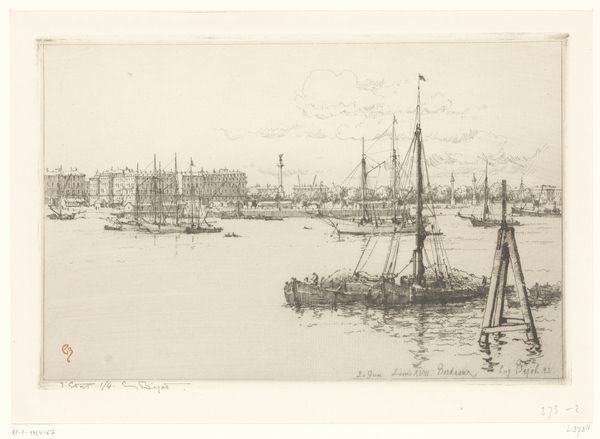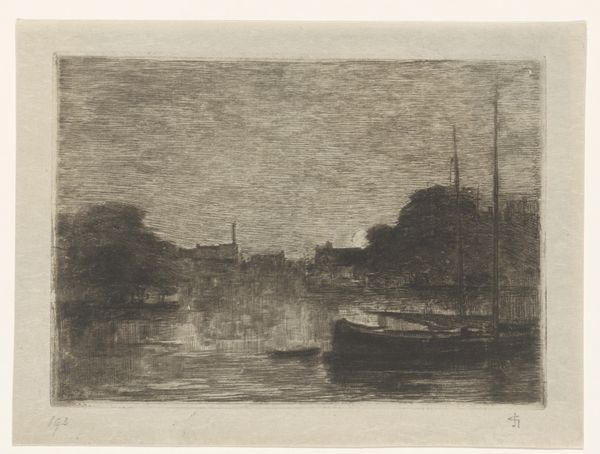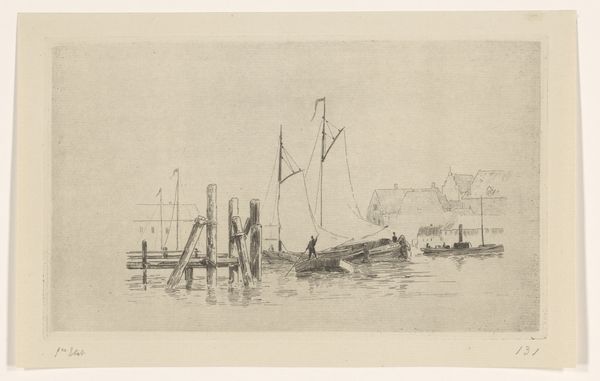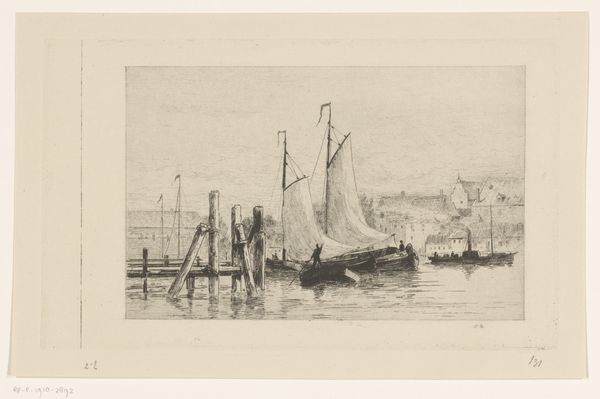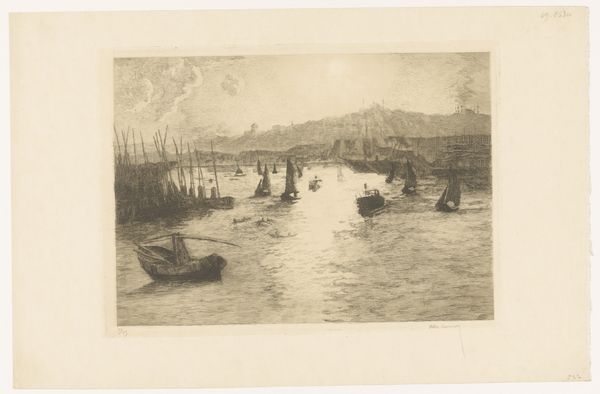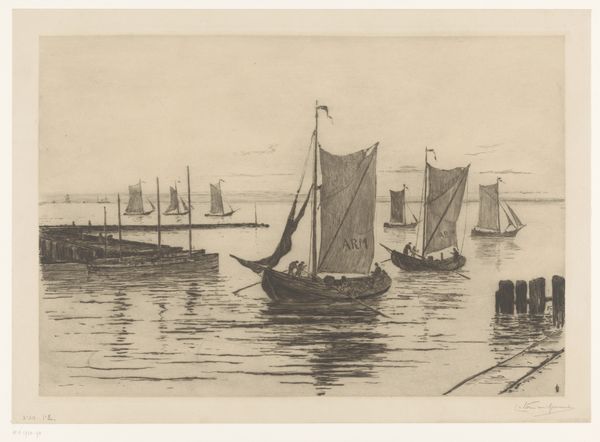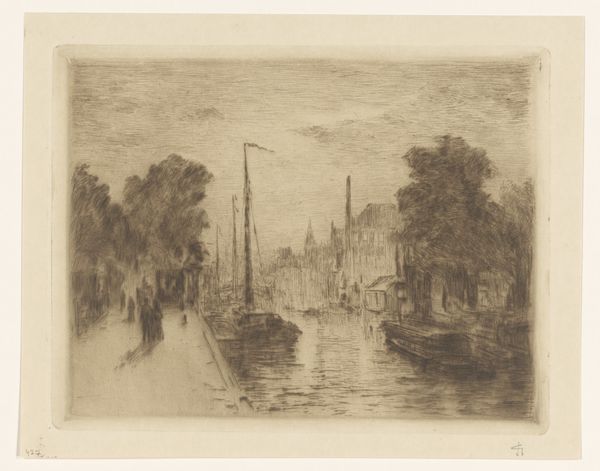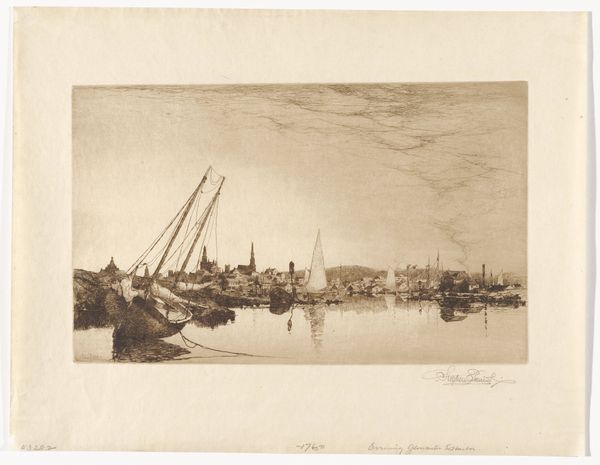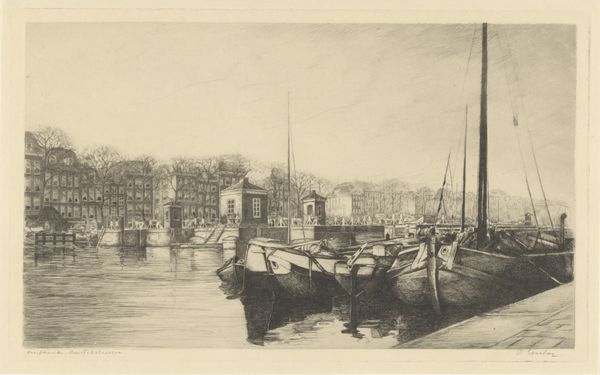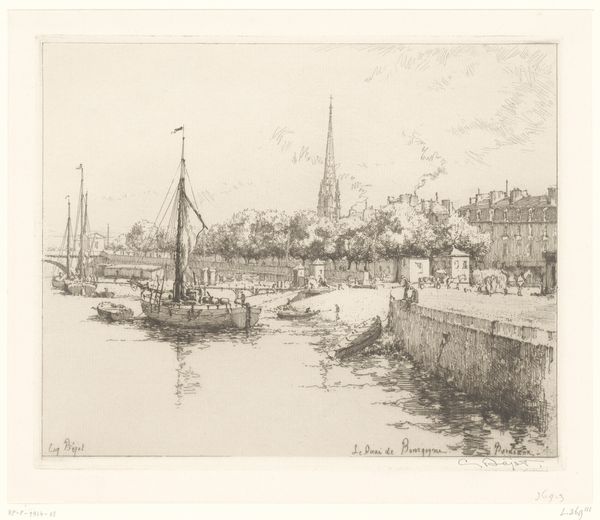
Havengezicht met stadhuis in Vlissingen 1887 - 1902
0:00
0:00
#
architectural sketch
#
landscape illustration sketch
#
amateur sketch
#
light pencil work
#
pencil sketch
#
incomplete sketchy
#
etching
#
pen-ink sketch
#
pencil art
#
watercolor
Dimensions: height 255 mm, width 345 mm
Copyright: Rijks Museum: Open Domain
Carel Nicolaas Storm van 's-Gravesande made this etching, Havengezicht met stadhuis in Vlissingen, using a metal plate and acid. The artist would have covered the plate with a waxy, acid-resistant substance, then scratched an image into it with a pointed tool, exposing the metal underneath. The plate was then submerged in acid, which bit into the exposed lines, creating grooves. These grooves hold ink, which is then transferred to paper under high pressure. Notice how this process results in very fine, precise lines, giving the image a rich, almost photographic quality. The choice of etching is significant. In the 19th century, printmaking processes like etching were critical to mass communication. Etchings like these were more than just art; they were a means of disseminating images and information widely, reflecting the growth of a more industrialized society. Looking at this harbor scene, we might consider it not only as a depiction of Vlissingen, but also as a product of its time, deeply connected to the era's technological advancements. This reminds us that art and craft are not separate, but intertwined with the broader currents of history.
Comments
No comments
Be the first to comment and join the conversation on the ultimate creative platform.
